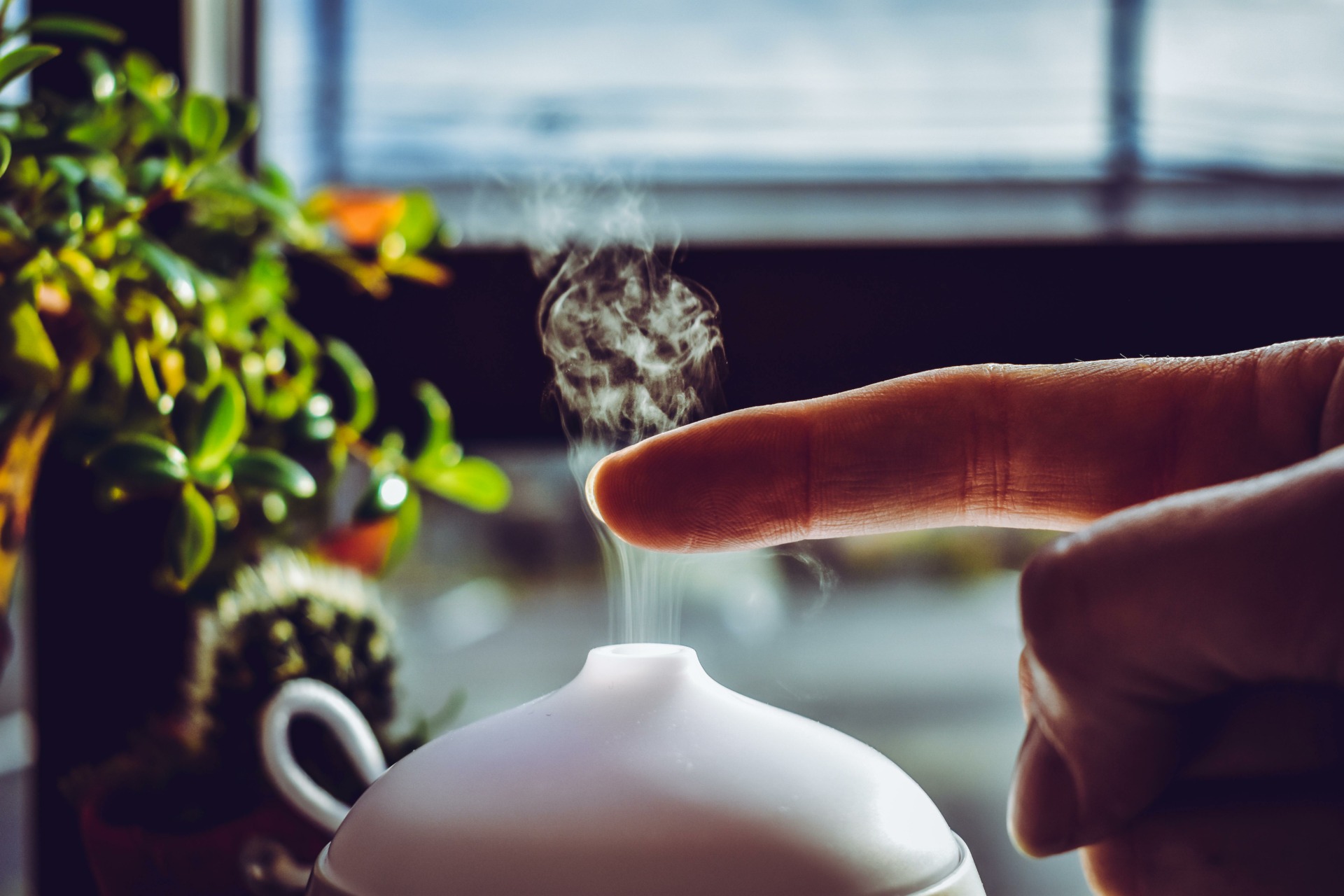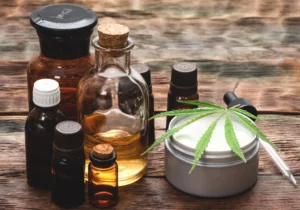Smoking, vaping or eating a favorite edible are the most common ways to get the medicinal and recreational benefits of cannabis. But can you use your other senses to consume marijuana? It may sound far-fetched, but there are proven benefits from smelling cannabis—specifically inhaling the plant’s aromatic and flavorful terpenes.
People who practice aromatherapy are already familiar with the concept. Aromatherapy is the ancient practice of healing with the scents of essential oils—and essential oils are made from terpenes. The olfactory system and parts of the brain that respond to scent are rich in natural cannabinoid receptors. So, yes, you can inhale cannabis-infused essential oils for some of the same benefits—like relaxation, focus and overall health—you gain from the more common ways of consuming marijuana.
FOLLOW US ON FACEBOOK & INSTAGRAM
What Is Aromatherapy & How Do Essential Oils Help?
Today, aromatherapy is usually classified as an alternative therapy. Its mystical, New Age overtones make many people skeptical of its potential for healing. But the use of essential oils to make people feel better has been going on for at least 6,000 years in cultures all around the globe. In the practice of aromatherapy, essential oils are inhaled, diffused into the air or used topically.
The essential oils used in aromatherapy are extracted from a wide variety of plants such as lavender, rosemary or clove. The oils are primarily made up of terpenes, oily compounds responsible for the distinctive flavors and scents of many plants and flowers.
Most plants have a terpene profile that consists of only one or two primary terpenes, which create their distinctive scents. But the cannabis plant has at least 100 terpenes, which accounts for the great variety in the aroma and flavor of different marijuana strains. And cannabis terpenes can be extracted to make essential oils just as they can be from other kinds of plants. So, essential oils made from cannabis can have significant benefits for the health of both body and mind.
RELATED: CANNABIS TERPENES PACK A THERAPEUTIC PUNCH
How Does Aromatherapy Work?
Aromatherapy actually has some solid science behind it. When you sniff something, such as a fruit or a flower, its molecules trigger a response in the olfactory receptors in the nose. Then, olfactory neurons carry signals from those receptors to the olfactory bulb, which begins to process the information about the smell. Special types of cell, called mitral cells, carry signals from the olfactory bulb to an area of the brain called the olfactory cortex. It’s the olfactory cortex that allows you to perceive and recognize that particular smell and distinguish it from all others.
But the olfactory response doesn’t stop there. Those mitral cells that take signals from the nose to the olfactory cortex also carry those signals to other parts of the brain. In particular, they carry the signals to the limbic system, an area of the brain associated with functions like heart rate, breathing, stress responses and memory.
Some of those mitral cells also connect directly to the amygdala, an area of the brain that’s strongly related to learning and memory. This can explain why certain smells may trigger overwhelmingly strong memories and associations in just about everyone. Even people suffering from Alzheimer’s disease and other kinds of dementia can experience memories brought on by smell.
Inhaling essential oils with their distinctive aromas can also trigger this chain of events: By just smelling the oils, the scent of a terpene travels to those highly sensitive areas of the brain responsible for relaxation responses, mood and even pain. That’s how aromatherapy can:
- Uplift mood
- Ease stress
- Promote calm and relaxation
Cannabinoids & the Sense of Smell
Essential oils of all kinds trigger responses in the olfactory system, which in turn activate the limbic system and the amygdala in the brain. But essential oils containing cannabis compounds are capable of much more, thanks to the endocannabinoid system (ECS).
The ECS is a wide network of receptors found throughout the body and brain. These receptors respond to cannabis compounds in the same way as they do to natural cannabinoids produced by the body itself. This explains why cannabis can have benefits for so many different health conditions.
From the nose to the brain, the olfactory system is rich in cannabinoid receptors, especially the receptor CB1. This receptor responds both to tetrahydrocannabinol (THC), the psychoactive component in cannabis, and cannabidiol (CBD). CBD triggers a number of processes that keep the body in balance and support the immune system and other healing responses.
When an essential oil containing cannabis or cannabis terpenes is inhaled, its molecules bind to those receptors. Because the limbic system and the amygdala also contain CB1 receptors, a cannabis-infused essential oil can trigger some of the same responses that come from consuming cannabis in other ways.
Using Cannabis Oils in Aromatherapy
You can experience many benefits from aromatherapy with cannabis oils such as:
- Calm
- Relaxation
- Renewed energy
- Skin health
- Focus
- Headache relief
For the purposes of aromatherapy, cannabis oil can refer to any of several different kinds of cannabis extracts. You could go for an extract of a specific terpene like limonene or linalool. You can also choose a pure CBD oil with very little to no THC or a cannabis oil with a higher THC content. Hemp oil, which comes from a strain of cannabis that contains no THC can also be used in aromatherapy. Like other kinds of essential oils, cannabis oils are usually mixed with a carrier oil such as sweet almond or olive oil.
To inhale the oils, you can:
- Add them to steam pots for inhaling
- Put them into a diffuser to fill a room with their distinctive scents
- Spray the oils on a user’s pillow or handkerchief
- Massage them into the skin
Aromatherapy experts warn that essential oils of all kinds can be toxic when ingested. The essential oil itself and the carrier oil can also cause allergic reactions and skin irritation, so users may need to start with small amounts. This includes oils with cannabis compounds, which are often much more concentrated than other products that contain cannabis are.
The healing benefits of cannabis come in many forms—including the essential oils used in the ancient practice of aromatherapy. Because cannabis activates not only the olfactory system itself, but the endocannabinoid receptors within that system, essential oils made with cannabis and its terpenes have potent healing powers all their own.
If you’re new to cannabis and want to learn more, take a look at our Cannabis 101 post. HelloMD can help you get your medical marijuana recommendation; it’s easy, private and 100% online.






